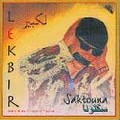Eastern Morocco's Kem Kem Beds are famous for their rich fossil deposits, which sometimes include isolated dinosaur teeth. Analyzing these teeth traditionally revealed little about the lives of these creatures that roamed the region 66 million years ago.
However, a new study published in February by an international team of scientists from the UK, Argentina, the Netherlands, Germany, and Belgium shows that by using and combining new techniques, these isolated dinosaur teeth can speak volumes about these predators, particularly theropods.
The study reveals that the older method of classifying dinosaur teeth by simply comparing their shapes is unreliable. Instead, the researchers focused on isolated theropod teeth from Morocco's Tafilalet region, within the Kem Kem Beds. They found that newer methods, like using computers to analyze the shapes of the teeth, are more accurate in identifying and classifying dinosaur teeth.
Combining methods, machine learning
The researchers explain the new methods as follows: comparing dinosaur teeth to known ones from other dinosaurs (cladistics), using statistics to find patterns in the shapes of the teeth (discriminant analysis), and using machine learning, a type of artificial intelligence.
They stated, «We used three different methods to distinguish these morphotypes and found that a combination of phylogenetic analysis based on dental characters and machine learning analysis of morphometric data was the most effective way to distinguish clades, with machine learning outperforming the more widely used Discriminant Function Analysis (DFA)».
This suggests that isolated teeth can be a valuable tool for understanding dinosaur diversity, and that new methods like machine learning can be even more helpful than traditional methods.
Indeed, this method helped the researchers identify four different types of teeth in Morocco's Kem Kem Group: Spinosaurinae, Carcharodontosauridae, Abelisauridae, and Averostra.





 chargement...
chargement...













